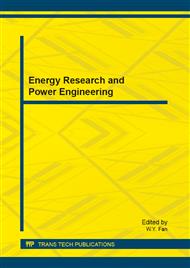p.3
p.8
p.13
p.18
p.23
p.28
p.33
p.38
p.42
Electrochemical Corrosion Behavior of Cu15Ni10Mn Alloy in NaCl Solution
Abstract:
Investigating the electrochemical corrosion behavior of Cu15Ni10Mn alloy in NaCl solution with different Cl concentration was studied by measuring open-circuit potential, potentiodynamic polarization, electrochemical impedance spectroscopy (EIS) and cyclic voltammetry. The results show that as the Cl- concentration increase, the corrosion potentials of the alloy shifted negatively, corrosion currents increase, the corrosion process by electrochemical control change of diffusion control, and therefore the corrosion rates become faster. The presence of Cl- have effect on the dissolution mechanism and corrosion products of the alloy, when the concentration of Cl- is relatively low, a reducing peak current appears in the process of cyclic voltammetry retracing , when the Cl- concentration is higher, cyclic voltammetry flyback process does not appear to restore the current peak. This is mainly associated with the generation of corrosion product, when Cl- concentration is low, the corrosion product is Cu2(OH)3Cl (basic copper chloride) and other two copper ion salts, when the concentration of Cl-is higher, corrosion products are mainly Cu2(OH)3Cl (basic copper chloride).
Info:
Periodical:
Pages:
23-27
Citation:
Online since:
July 2013
Authors:
Price:
Сopyright:
© 2013 Trans Tech Publications Ltd. All Rights Reserved
Share:
Citation:


